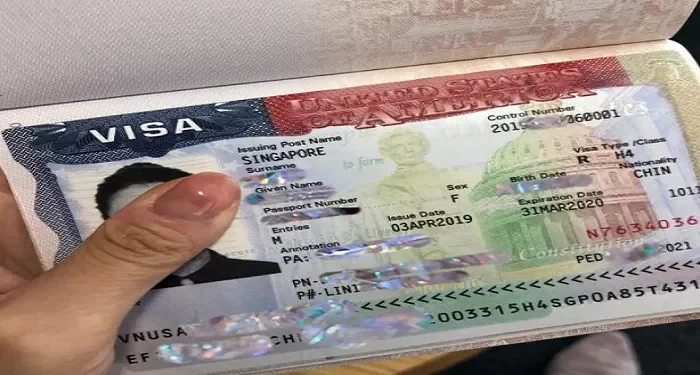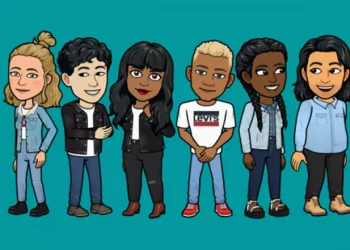Malaysians who wish to travel to the United States for various reasons, such as tourism, business, study, or to visit family and friends, need to apply for a US visa. The application process involves several important steps and considerations.
Determine the Appropriate Visa Type
Tourist Visa (B-2)
If a Malaysian citizen is planning a short-term visit to the US for tourism purposes, such as sightseeing, visiting attractions, or relaxing on vacation, the B-2 tourist visa is the most suitable option. This visa allows the holder to stay in the US for a specific period, usually up to six months, depending on the discretion of the US immigration officer at the port of entry. For example, if a Malaysian wants to visit popular tourist destinations like New York City to see the Statue of Liberty, Times Square, or go to Orlando to experience the theme parks, a B-2 visa would be required.
Business Visa (B-1)
For Malaysians traveling to the US for business-related activities, such as attending business meetings, conferences, or negotiating contracts, the B-1 business visa is appropriate. This could include activities like a Malaysian entrepreneur going to the US to meet with potential business partners, attend a trade show, or conduct market research. The key is to demonstrate that the primary purpose of the trip is business-related and that the applicant has a legitimate reason for the visit and sufficient financial resources to support themselves during their stay in the US.
Student Visa (F-1)
If a Malaysian wishes to study in the US at an accredited educational institution, they need to apply for an F-1 student visa. This involves being accepted into a US school, college, or university. The applicant must show proof of enrollment, financial ability to cover tuition fees and living expenses, and an intention to return to Malaysia after completing their studies. For instance, a Malaysian student who has been accepted into a prestigious US university to pursue a degree in engineering or business would apply for an F-1 visa. They would need to provide documents such as the acceptance letter, financial statements, and a study plan.
Other Visa Types
There are also other visa categories depending on the specific circumstances and purposes of the visit, such as work visas (if eligible for employment in the US), exchange visitor visas (J-1), and dependent visas (for family members accompanying the principal visa holder). Each type has its own specific requirements and application procedures, and it is important for Malaysians to carefully assess their situation and choose the correct visa type that aligns with their intended activities in the US.
Gather the Required Documents
Passport and Photographs
A valid Malaysian passport is essential. The passport should have at least six months of validity remaining from the date of intended travel to the US. Additionally, applicants need to provide recent passport-sized photographs that meet the US visa photo requirements. These photos should be clear, with a white or off-white background, and show the applicant’s face clearly without any obstructions such as glasses (unless worn regularly and cannot be removed due to medical reasons) or head coverings (except for religious or medical reasons, and in such cases, additional documentation may be required).
Application Form (DS-160)
Malaysians need to complete the online DS-160 application form. This form requires detailed personal information, including name, date of birth, address, contact details, employment history (if applicable), educational background, and travel history. It is important to fill out the form accurately and truthfully. Any discrepancies or false information can lead to the application being rejected. For example, if an applicant misstates their employment dates or educational qualifications, it may be discovered during the visa processing and could result in a denial.
Proof of Ties to Malaysia
To demonstrate that they have strong ties to Malaysia and are likely to return after their visit to the US, applicants need to provide evidence. This can include property ownership documents in Malaysia, family ties (such as marriage certificates, birth certificates of family members in Malaysia), employment letters from Malaysian employers indicating their position and the intention to retain their employment upon return, or financial assets and liabilities in Malaysia. For instance, a Malaysian with a stable job in a local company, a house in Malaysia, and a family living there is more likely to convince the US consular officer that they will return after their US trip.
Financial Documents
Depending on the visa type, applicants may need to show proof of sufficient financial resources to cover their expenses in the US. For tourist and business visas, this could be bank statements showing a certain balance, salary slips, or other evidence of financial stability. For student visas, in addition to personal or family financial statements, it may also be necessary to provide evidence of financial sponsorship, such as a letter from a sponsor (e.g., parents, scholarship provider) stating their willingness and ability to support the student’s studies and living expenses in the US.
Additional Documents (if applicable)
If applying for a student visa, applicants need to provide proof of acceptance from a US educational institution, such as an acceptance letter and the I-20 form. For business visas, relevant business documents like invitation letters from US companies, business plans, or contracts may be required. In some cases, if there are special circumstances or if the consular officer requests further information, additional documents may need to be provided to clarify the purpose and intentions of the visit.
Schedule a Visa Interview
Payment of Visa Application Fee
After completing the DS-160 form, Malaysians need to pay the applicable visa application fee. The fee amount varies depending on the visa type and can be paid online or at designated banks in Malaysia. It is important to keep the payment receipt as proof of payment, as it may be required during the interview process.
Appointment Scheduling
Once the fee is paid, applicants can schedule a visa interview at the US Embassy or Consulate in Malaysia. The interview is an important part of the application process as it allows the consular officer to assess the applicant’s eligibility and intentions. Interviews are usually scheduled through an online appointment system. It is advisable to schedule the interview well in advance, as there may be a waiting period, especially during peak travel seasons or high-demand periods for visas. Applicants should choose a date and time that is convenient for them and ensure they have all the necessary documents and information ready before the interview.
Interview Preparation
Before the interview, applicants should prepare thoroughly. This includes familiarizing themselves with the details of their application, being able to clearly explain the purpose of their visit to the US, and having ready answers to common questions asked during the interview. It is also a good idea to dress appropriately and arrive at the embassy or consulate on time. Some common questions that may be asked during the interview include questions about the applicant’s travel plans, financial situation, family ties in Malaysia, and reasons for returning after the visit. For example, if applying for a tourist visa, the consular officer may ask about the places the applicant plans to visit in the US, how they will finance their trip, and what ties they have to Malaysia that would ensure their return.
Attend the Visa Interview
Arrival at the Embassy/Consulate
On the day of the interview, applicants should arrive at the US Embassy or Consulate in Malaysia at the scheduled time. They should bring all the required documents, including the original passport, application form confirmation page, payment receipt, and any additional documents as per the visa type. It is important to follow the security procedures and instructions at the embassy or consulate premises.
Interview Process
During the interview, the consular officer will ask questions based on the information provided in the application and to further assess the applicant’s eligibility. The applicant should answer truthfully, clearly, and concisely. It is important to maintain a calm and confident demeanor. If the officer has any doubts or requires further clarification, the applicant should be prepared to provide additional information or explain their situation more thoroughly. For example, if the consular officer is concerned about the applicant’s financial ability to support their trip, the applicant can provide more detailed bank statements or explain their sources of income.
Decision and Notification
After the interview, the consular officer will make a decision on the visa application. In some cases, the decision may be made immediately, and the applicant will be informed whether their visa is approved, denied, or if further administrative processing is required. If the application requires additional processing, the applicant will be notified of the expected timeline. For approved visas, the passport will be stamped with the visa and returned to the applicant either through a courier service or by pickup at a designated location. If the visa is denied, the applicant will be given a reason for the denial and may have the option to appeal or reapply in some cases, depending on the circumstances.
Conclusion
Applying for a US visa as a Malaysian citizen requires careful planning, preparation, and adherence to the specific requirements and procedures. By determining the appropriate visa type, gathering the necessary documents, scheduling and preparing for the interview, and presenting oneself well during the interview, Malaysians can increase their chances of a successful visa application. It is important to be honest and provide accurate information throughout the process. The US visa application process can be complex and time-consuming, but with proper attention to detail and a clear understanding of the requirements, Malaysians can take the necessary steps to obtain a US visa for their intended purpose of travel, study, or business. Remember that each application is evaluated on its own merits, and meeting the requirements does not guarantee approval, but it significantly improves the likelihood. It is also advisable to stay updated on any changes in US visa policies and procedures to ensure a smooth application process.
Related Topics:



















